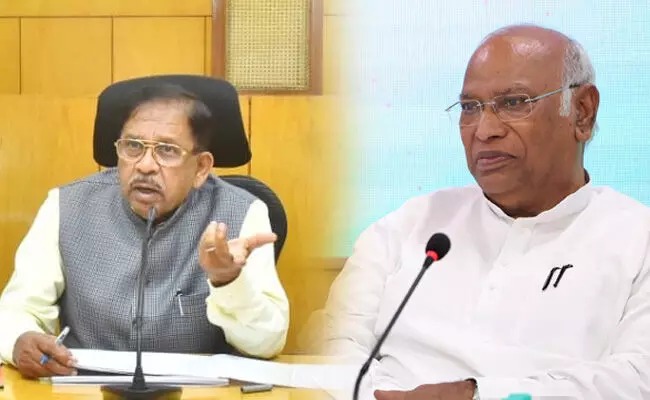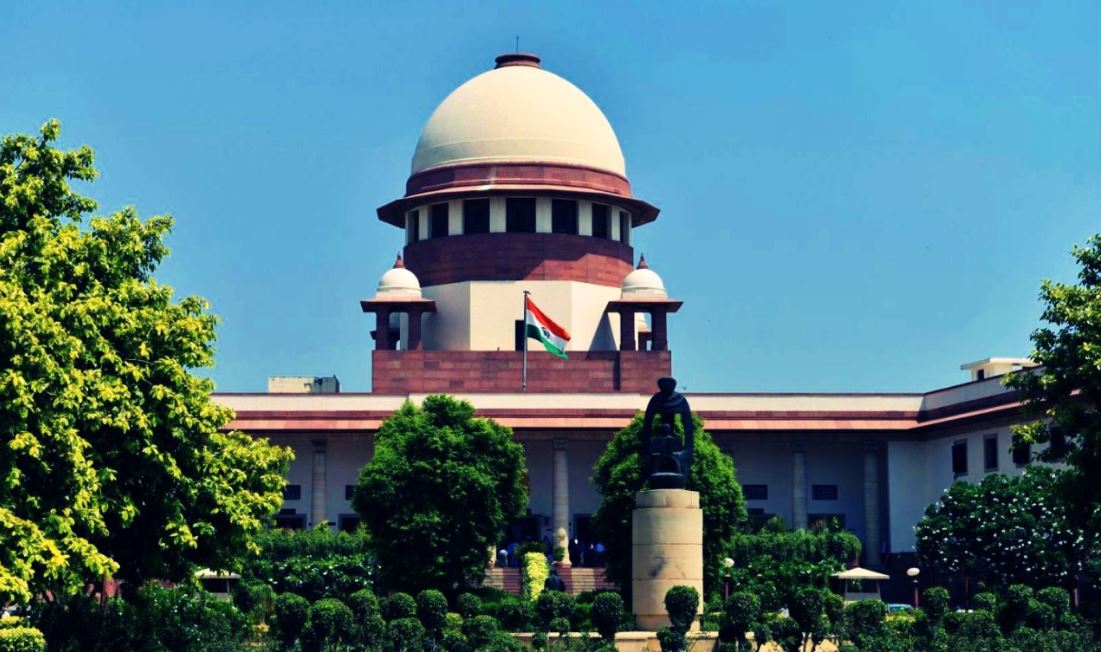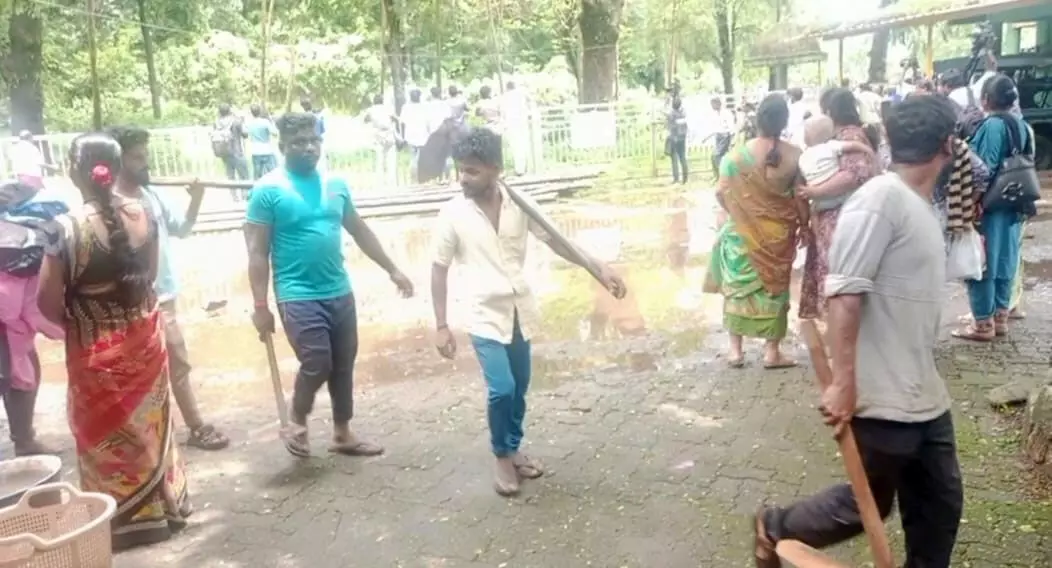New Delhi, Oct 24: The Supreme Court on Thursday set aside an order of the Punjab and Haryana High Court which had accepted Aadhaar card for determining the age of a road accident victim to grant compensation.
A bench comprising Justices Sanjay Karol and Ujjal Bhuyan, therefore, said the age of the deceased had to be determined from the date of birth mentioned in the school leaving certificate under Section 94 of the Juvenile Justice (Care and Protection of Children) Act, 2015.
"We find that the Unique Identification Authority of India, by way of its circular number 8 of 2023, has stated, in reference to an office memorandum issued by the Ministry of Electronics and Information Technology dated December 20, 2018, that an Aadhaar Card, while can be used to establish identity, is not per se proof of date of birth," noted the bench.
When it came to determining the age, the top court accepted the contention of the claimant-appellants before it and upheld the judgment of the Motor Accident Claims Tribunal (MACT) which calculated the deceased's age on the basis of his school leaving certificate.
The top court was hearing an appeal filed by kin of a man who died in a road accident in 2015.
MACT, Rohtak awarded a compensation of Rs 19.35 lakh which was reduced to Rs 9.22 lakh by the high court after noting the MACT had wrongly applied the age multiplier while determining the compensation.
The high court had relied on the deceased's Aadhaar card to calculate his age as 47 years.
The family contended the high court erred in determining the deceased's age on the basis of the Aadhaar card as his age, if calculated as per his school leave certificate, was 45 years at the time of death.
Let the Truth be known. If you read VB and like VB, please be a VB Supporter and Help us deliver the Truth to one and all.
Bengaluru(PTI): Karnataka Home Minister G Parameshwara on Tuesday said there is nothing wrong if party national President Mallikarjun Kharge wants to return to state politics.
He was responding to a question from reporters on Kharge's remarks, recalling how he lost the Chief Minister's post to S M Krishna after the 1999 Karnataka Assembly polls. Kharge's remarks added to the speculations of leadership change in Congress and about his return to state politics.
Senior Congress leader Parameshwara also said that wrongly interpreting Kharge is also not correct.
Kharge's statement seems to have rekindled the debate on 'Dalit CM' within the party. The AICC President, who hails from Karnataka, belongs to a Scheduled Caste.
Making a Dalit the CM is a hotly debated matter within the Congress party, the issue on which senior leaders and Ministers Parameshwara and H C Mahadevappa have openly spoken in the past. Both belong to Scheduled Castes.
These comments have come amid speculations within the state's political circles, especially within the ruling Congress, for some time now about the Chief Minister change later this year, citing a rumoured power-sharing agreement involving incumbent Siddaramaiah and Deputy CM D K Shivakumar.
"Kharge is a senior leader not only in our party, but in national politics, making comments on him is not right. Kharge is competent to hold all kinds of positions; he has experience, and he has been in politics for about 50 years. If he says something, interpreting it wrongly is not correct," Parameshwara told reporters in response to a question.
Asked about some speaking about his return to state politics, he said, "There is nothing wrong in it. He is holding the decisive position in our party. He is the one who decides as to who should be the Chief Minister, being the AICC President. So, in case he wants to come back to state politics, no one should interpret it wrong."
Speaking at an event in Vijayapura on Sunday, Kharge had recalled about him missing the Chief Ministerial post, when Congress came to power in 1999.
"As CLP (Congress Legislature Party) leader I tried to bring the party to power (ahead of 1999 polls), the party formed the government and S M Krishna became the Chief Minister. He had come (as KPCC President) four months ahead (of polls)....all my service was washed down the river. I feel that -- I toiled for five years, but the person who came four months ago was made the CM," the Congress chief had said.
"What I'm trying to say is, we may face difficulties, but we must continue to work without greed in mind. If you are greedy, you won't get anything, also you won't be able to do what's in your mind. Passing through all these things, from being a block president, I have now become AICC President. I did not go behind positions," he further said.
Mahadevappa too, reacting to Kharge's statement on Monday had said, Kharge is one of the senior leaders in the country and he has all the required qualities to occupy any constitutional post, and our wish is that he should get an opportunity, whenever there is one.
Naming Dalit leaders in Congress who have occupied the CM post in other states like -- Damodaram Sanjivayya, Sushil Kumar Shinde, Jagannath Pahadia and Ram Sundar Das, he said, "When time comes the party will take a decision and everyone will abide by it."
However, trying to downplay speculations, Kharge's son and IT/BT Minister Priyank Kharge on Monday said his father was merely sharing the path he had walked in his political career -- both ups and downs -- and that his speech should be seen in entirety not selectively. He has also made it clear that he has no regrets.
"From the blessings of everyone, the people of Kalaburagi and Karnataka, he is in the post that was once occupied by Subhas Chandra Bose and Gandhiji. Whatever he has decided on his political future, he will decide himself. He has earned that respect and reputation. He has a good relationship with the high command. Whatever he decides, Rahul Gandhi, Sonia Gandhi and Priyanka Gandhi will automatically accept it," he said.





